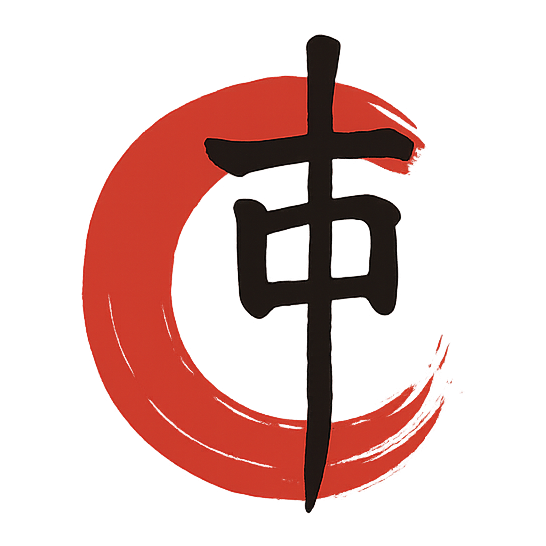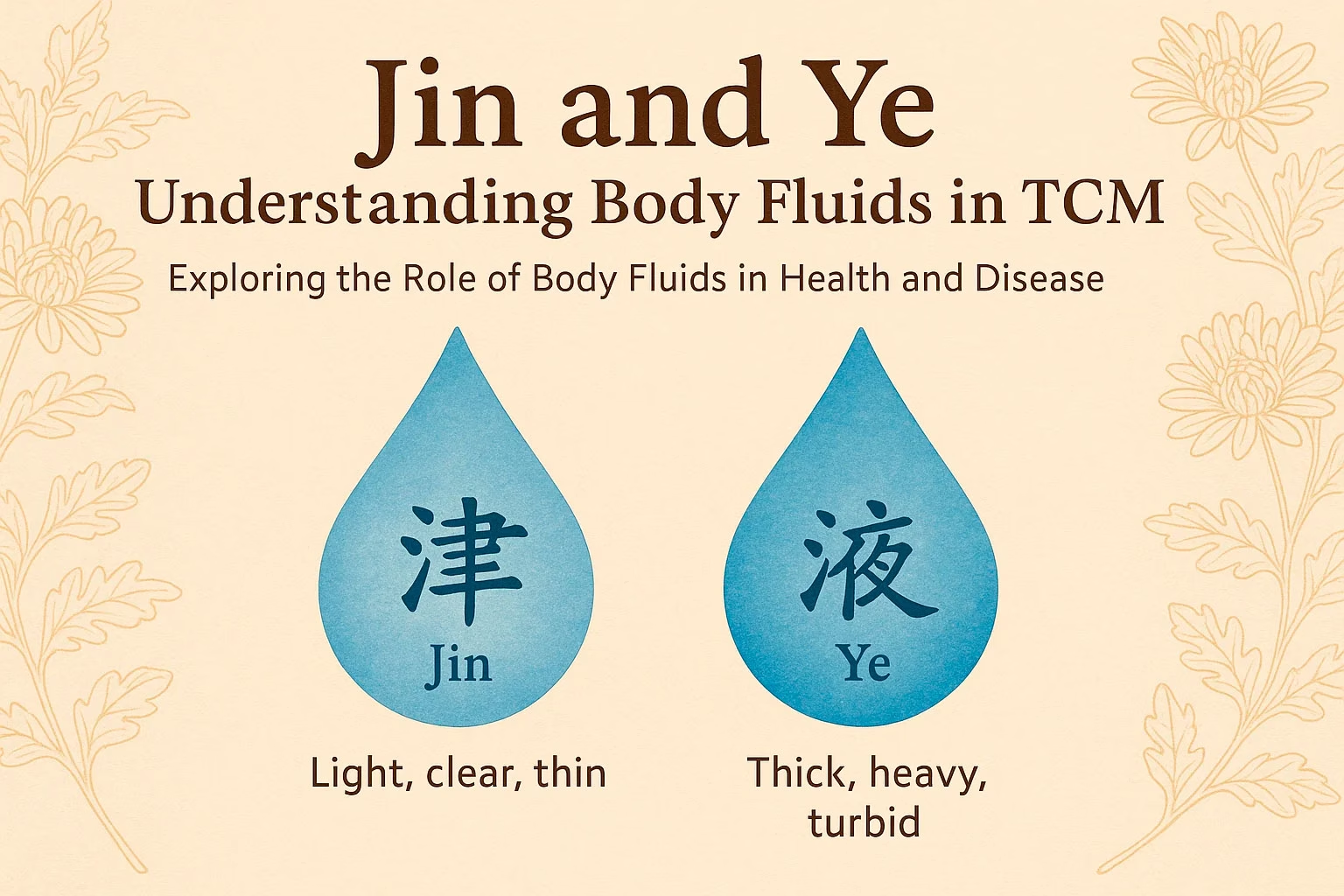Exploring the Role of Body Fluids in Health and Disease
🔶 Introduction
While concepts like Qi, Blood, and Essence (Jing) are well known in Traditional Chinese Medicine (TCM), the role of body fluids, known as Jin (津) and Ye (液), is often less emphasized—yet equally vital. Together, Jin and Ye represent the body’s internal water system, responsible for moistening tissues, nourishing organs, supporting metabolism, and maintaining physiological harmony.
TCM views these fluids as dynamic products of food and drink transformation by the Spleen, Stomach, and Kidneys, and any disruption in their generation, distribution, or excretion can lead to a wide range of disorders. This article explores the nature of Jin and Ye, their physiological roles, pathological changes, and clinical relevance in both internal medicine and preventive health.
🔶 What Are Jin and Ye?
The term “Jin-Ye” (津液) refers to all the normal fluids in the body. TCM classifies these into two categories based on their quality, function, and distribution:
| Category | Character | Function | Location |
|---|---|---|---|
| Jin (津) | Light, clear, thin | Moistens skin, muscles, orifices; part of Blood | Distributed to exterior: skin, muscles, superficial tissues |
| Ye (液) | Thick, heavy, turbid | Nourishes brain, marrow, joints, internal organs | Stored in deeper layers: Zang organs, bones, brain |
🔶 Generation and Transformation of Body Fluids
TCM teaches that body fluids originate from water and grain (food). The main organs involved in the production and regulation of Jin and Ye include:
✅ Spleen – Responsible for transformation and transportation. It extracts the clear parts of ingested food and fluids and moves them upward and outward.
✅ Stomach – Acts as the origin of fluids, breaking down food and initiating fluid separation.
✅ Lungs – Disperse Jin to the skin and upper body; regulate water passages.
✅ Kidneys – Govern fluid metabolism, control opening and closing of the bladder, and ensure downward movement of turbid fluids.
✅ San Jiao (Triple Burner) – A functional concept representing the pathways for fluid distribution and excretion across the upper, middle, and lower body.
🔶 Functions of Jin and Ye
- Moistening and Lubricating
- Jin moistens the skin, hair, eyes, mouth, and muscles.
- Ye nourishes the brain, bones, Zang-Fu organs, and joints.
- Forming and Supporting Blood
- Jin-Ye is partially transformed into Blood, and Blood also helps anchor and nourish fluids.
- Regulating Temperature
- By circulating with Qi and Blood, Jin-Ye helps maintain internal balance and prevent dry-heat conditions.
- Protecting the Body
- Fluids in the mouth, nose, throat, and skin form a first line of defense against pathogens.
🔶 Pathological Changes in Body Fluids
Disruption of Jin-Ye balance can result from external evils (e.g., Wind, Dryness), internal damage, or improper diet.
✅ 1. Fluid Deficiency
- Causes: Febrile diseases, overwork, excessive sweating or urination.
- Symptoms:
- Dry mouth and throat
- Thirst
- Dry skin and eyes
- Constipation
- Scanty urine
- Example: Yin Deficiency with fluid depletion.
✅ 2. Fluid Accumulation (Dampness / Phlegm / Edema)
- Causes: Spleen Qi deficiency, Kidney Yang deficiency, poor diet.
- Symptoms:
- Heaviness of limbs
- Puffiness
- Loose stools
- Phlegm in lungs
- Mucus, nodules, or lumps
- Example: Damp-Phlegm obstructing the Lung or Middle Jiao.
🔶 TCM Treatment Strategies for Jin-Ye Disorders
✅ For Fluid Deficiency:
- Nourish Yin, generate fluids.
- Common herbs:
- Mai Dong, Tian Hua Fen, Sheng Di Huang, Yu Zhu
- Formulas:
- Zeng Ye Tang: Generates fluids, treats dryness constipation.
- Sheng Mai San: Tonifies Qi, nourishes Yin, preserves fluids.
✅ For Fluid Accumulation:
- Drain Damp, transform Phlegm, tonify Spleen or Kidney.
- Common herbs:
- Fu Ling, Ze Xie, Ban Xia, Chen Pi
- Formulas:
- Er Chen Tang: Transforms Phlegm, dries Dampness.
- Wu Ling San: Promotes urination, resolves edema.
- Ling Gui Zhu Gan Tang: Strengthens Spleen, warms Yang, removes fluids.
✅ Lifestyle Tips:
- Drink room temperature water; avoid excessive cold and raw foods.
- Eat warm, cooked meals to support Spleen transformation.
- Moderate sweating and urination—avoid overuse of diuretics or sweat-inducing exercise in weak patients.
🔶 Jin and Ye in Modern Interpretation
Modern parallels to Jin-Ye include:
- Jin: Interstitial fluids, lymph, extracellular fluids.
- Ye: Synovial fluid, cerebrospinal fluid, glandular secretions.
Current research supports TCM views that fluid balance affects:
- Skin health (hydration)
- Cognitive function (brain nourishment)
- Detoxification (via lymph and urine)
- Immune protection (mucosal integrity)
🔶 Conclusion
Jin and Ye are essential to life, forming the fluid matrix that protects, nourishes, and regulates the body. TCM’s nuanced classification of these fluids provides a practical framework for understanding disorders of dryness, phlegm, edema, and internal heat.
By supporting the Spleen, Kidneys, and proper transformation of food and fluids, one can maintain healthy circulation of body fluids and prevent many chronic disorders. In the TCM view, health isn’t just the absence of disease—it’s the smooth, moist, and balanced movement of Qi, Blood, and Fluids.


发表回复